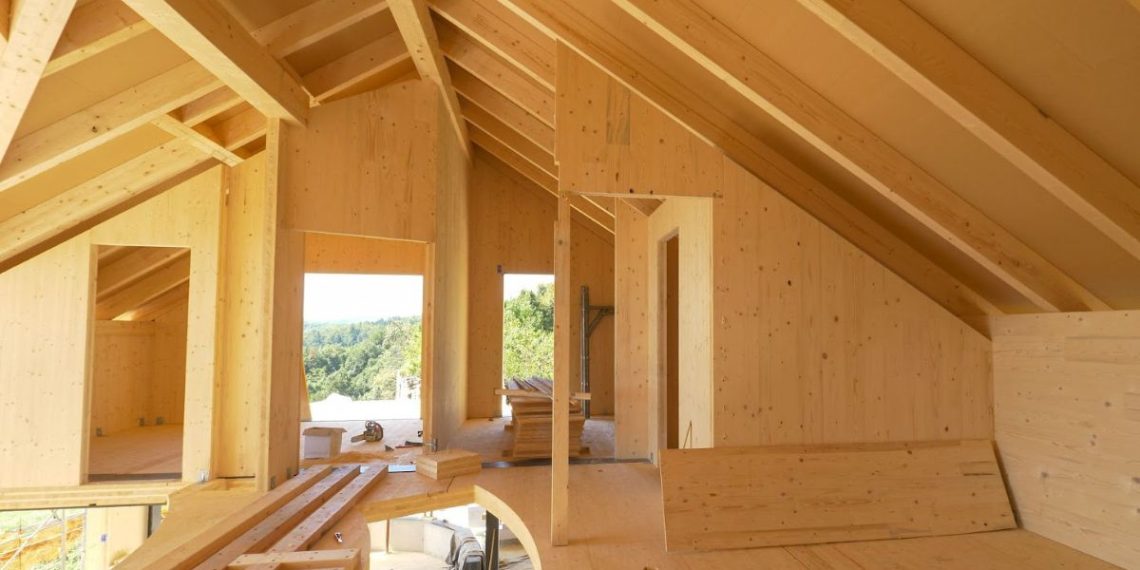In a world confronting the inevitable challenge of climate change, focusing on sustainability in the construction sector has become an ethical and environmental imperative. With the rise of eco-conscious practices, innovative eco-friendly building materials are tracing a steady upward trajectory in popularity within the construction industry. These materials extend beyond traditional green alternatives and innovate in terms of production, usage, and recycling. Predominantly, eco-friendly building materials fall into categories that are renewable or have a significantly lower environmental impact compared to conventional or traditional building materials. Spearheading the much-needed shift in the construction world, these materials provide sustainable residential design solutions that defy the misconception that ‘green’ means sacrificing quality or efficiency.
The Growing Importance of Eco-Friendly Building Materials
The traditional construction sector has been a substantial contributor to environmental degradation over the last century. Mainstream building practices involve extraction and use of non-renewable materials, excessive energy use in production methods, and contribute enormously to landfill waste. The global recognition of these impacts is stirring a transition in the construction sector towards eco-friendliness.
Worldwide, the demand has surged for materials that have less environmental impact in their lifecycle- from production to disposal. Government regulations and social awareness also aid the uptake of such practices. Modern architectures, like the state-of-the-art Edge Building in Amsterdam, serve as beacons of sustainable possibilities, integrating a multitude of eco-friendly building materials and paving the path for a new wave in construction practices.
Types of Innovative Eco-Friendly Building Materials
Numerous eco-friendly and innovative building materials are making their mark in the industry today.
Bamboo, a renewable, tremendously versatile resource, is recognised for its tremendous strength-to-weight ratio that surpasses even that of steel, making it a viable choice for numerous construction applications. Furthermore, its rapid growth rate eliminates the environmental concerns of deforestation attributed to traditional timber use.
Using recycled steel stands out as a potential game-changer in the industry. The process of repurposing steel greatly cuts the need for energy-exhaustive productions of new steel, significantly reducing the carbon footprint and energy use affiliated with this commonly used material.
According to experts such as HVAC, plumbing and solar services in Rancho Cordova, CA, solar tiles have emerged not just as a highly efficient roofing material, but also an incorporated solution for renewable energy generation in a building, reducing dependence on fossil fuel-powered electricity.
Precast concrete has become a viable approach in today’s market. Made in factories under strict quality controlled conditions, it promises targeted precision, thereby reducing waste and increasing efficiency, while ensuring superior durability compared with traditional concrete.
Evaluating the Performance and Benefits of Eco-Friendly Building Materials
The common misconception is that opting for ‘green’ materials means sacrificing quality or durability. Modern eco-friendly building materials are dispelling this myth. Many of these materials surpass conventional ones in terms of strength, longevity and resilience. An ecological construction approach using these materials doesn’t just speak to environmental responsibility but also aligns with the increasing demand for affordable, durable building solutions.
Moreover, the energy efficiency of these materials, whether insulation or energy production, contributes to significant long-term energy savings. Embracing these sustainable materials often results in healthier indoor air quality due to reduced toxins and volatile organic compounds, contributing towards better health and well-being for inhabitants. In addition to these benefits, homeowners are increasingly opting for whole home humidifier installation new york to further enhance indoor air quality and maintain optimal humidity levels, ensuring a comfortable and healthy living environment.
Challenges Associated with Eco-Friendly Building Materials
Adopting eco-friendly building materials, while promising, presents its distinct challenges too. The upfront cost of procuring these materials can be comparatively high as they’re often not mass-produced. Additionally, the availability of some eco-friendly materials is limited due to regional restrictions on sourcing or production.
Misconceptions about the strength, reliability and longevity of these materials can discourage potential users. Builder or contractor familiarity with traditional practices can also be a hurdle in the adoption of innovative materials.
The Future of Eco-Friendly Building Materials
Taking eco-friendly materials into the mainstream will be guided by continuous advancements in technology and an increase in expertise in eco-conscious architectural practices. Trends like virtual reality, 3D printing, and bio-based materials are already proving instrumental in shaping a prosperous future for eco-friendly building design. Public interest in greener, healthier living spaces and strengthening regulations will further fuel this demand.
Innovative partnerships between various industries including environmental technology and construction will undoubtedly add dimensions to this green movement. Policymakers have a crucial role in advocating for stricter measures encouraging the use of eco-friendly building techniques and materials.
Conclusion
Reflecting on the journey, it is apparent that a consistent commitment to eco-friendly materials is necessary to successfully transition to a more sustainable construction industry. Both construction companies and prospective home builders should delve into the exploration of these alternatives. For instance, if you plan on selling or buying a new home, consider consulting a conveyancing solicitors for assistance.
The potential of innovative eco-friendly building materials is as vast as it is promising. Further exploration, research, and development can pave the way for an array of solutions not even imagined today. Amidst all the challenges and opportunities, it is clear that the future of construction is deeply interwoven with sustainable solutions.


